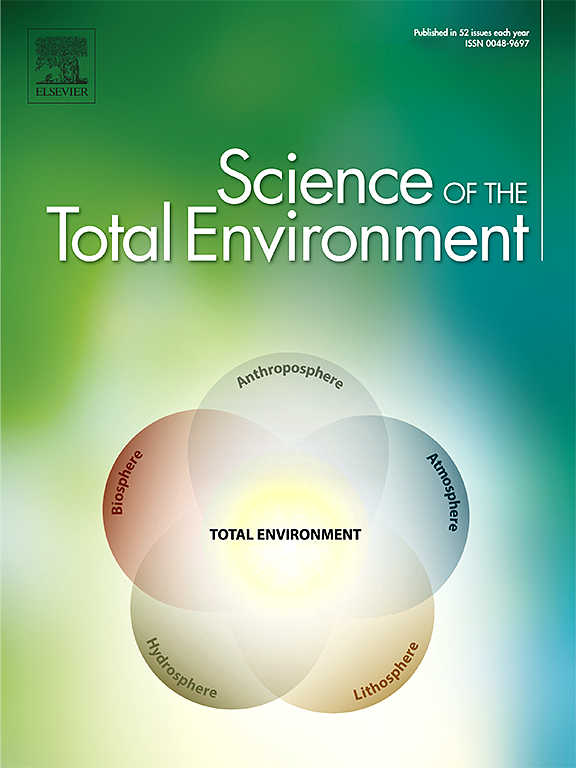Spatial metabolomics revealed multi-organ toxicity and visualize metabolite changes induced by borneol in zebrafish
IF 8.2
1区 环境科学与生态学
Q1 ENVIRONMENTAL SCIENCES
引用次数: 0
Abstract
This study focuses on the potential hazards of borneol (BO) to aquatic organisms and human health. BO has antibacterial, anti-inflammatory and antioxidant activities, and is widely used in medicine, cosmetics, and detergents. In this study, zebrafish was used as a model organism to systematically evaluate the effects of BO on the heart, liver, kidney, and nervous system. The effects of BO on metabolites of zebrafish were studied using MALDI-MSI. The results showed that a high concentration of BO (500 μM) could induce morphological abnormalities (swim-bladder loss, spinal curvature, body-length shortening), cardiotoxicity (decreased heart rate, increased SV-BA distance), hepatotoxicity (reduced liver area index), and neurotoxicity (impaired behavioral ability, and dopamine neuron development deficits), but there was no renal toxicity observed in zebrafish. Additionally, MALDI-MSI analysis showed that BO exposure significantly altered the levels of metabolites, including phospholipids, fatty acids, choline, and amino acids. The contents of PC-34:1, PC-34:2, PI-36:4, PE-36:1, LysoPE-22:5, LysoPC-18:1, FA-18:2, phenylalanine, lysine and glutathione were significantly increased, while the contents of PC-38:6 and PC-40:6 were significantly decreased. Notably, BO elicited a significant alteration in the mRNA expression levels of genes associated with phospholipid metabolism, fatty acid metabolism, choline metabolism, and amino acid metabolism (such as elovl5, chpt1, chka, setd7, hgd). This study revealed that BO exerted toxicity on multiple organs and demonstrated that BO causes metabolic dysregulation in zebrafish. These findings provide a novel insight into the toxicity of BO.

求助全文
约1分钟内获得全文
求助全文
来源期刊

Science of the Total Environment
环境科学-环境科学
CiteScore
17.60
自引率
10.20%
发文量
8726
审稿时长
2.4 months
期刊介绍:
The Science of the Total Environment is an international journal dedicated to scientific research on the environment and its interaction with humanity. It covers a wide range of disciplines and seeks to publish innovative, hypothesis-driven, and impactful research that explores the entire environment, including the atmosphere, lithosphere, hydrosphere, biosphere, and anthroposphere.
The journal's updated Aims & Scope emphasizes the importance of interdisciplinary environmental research with broad impact. Priority is given to studies that advance fundamental understanding and explore the interconnectedness of multiple environmental spheres. Field studies are preferred, while laboratory experiments must demonstrate significant methodological advancements or mechanistic insights with direct relevance to the environment.
 求助内容:
求助内容: 应助结果提醒方式:
应助结果提醒方式:


